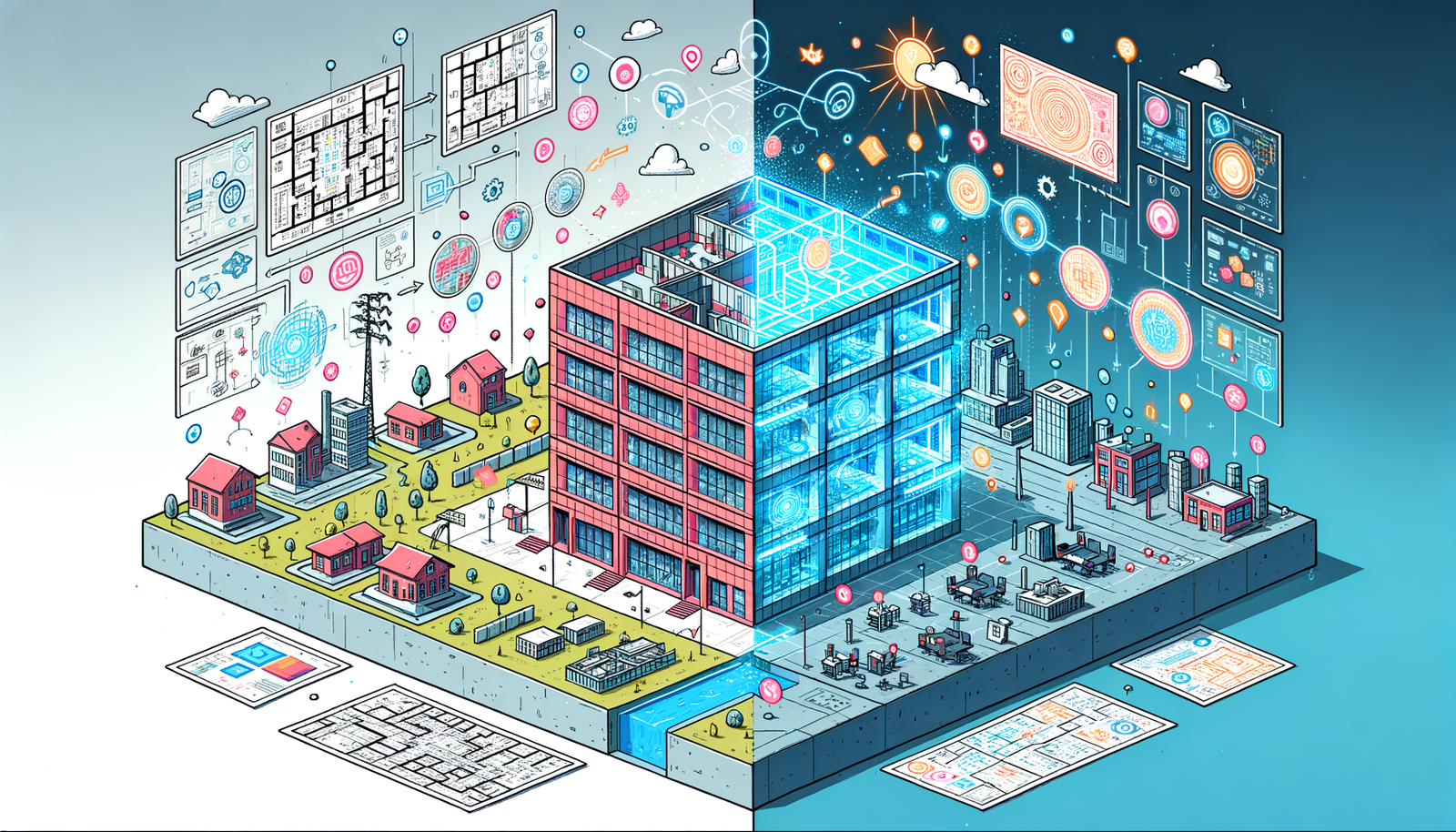Your Cart is Empty
Customer Testimonials
-
"Great customer service. The folks at Novedge were super helpful in navigating a somewhat complicated order including software upgrades and serial numbers in various stages of inactivity. They were friendly and helpful throughout the process.."
Ruben Ruckmark
"Quick & very helpful. We have been using Novedge for years and are very happy with their quick service when we need to make a purchase and excellent support resolving any issues."
Will Woodson
"Scott is the best. He reminds me about subscriptions dates, guides me in the correct direction for updates. He always responds promptly to me. He is literally the reason I continue to work with Novedge and will do so in the future."
Edward Mchugh
"Calvin Lok is “the man”. After my purchase of Sketchup 2021, he called me and provided step-by-step instructions to ease me through difficulties I was having with the setup of my new software."
Mike Borzage
Integrating BIM and Digital Twins: Revolutionizing Architectural Design and Construction
May 08, 2024 3 min read


Understanding BIM and Digital Twins
Building Information Modeling (BIM) is a digital representation of the physical and functional characteristics of a facility. It serves as a shared knowledge resource for information, forming a reliable basis for decisions during a building's lifecycle, from earliest conception to demolition. BIM is crucial in architectural design for its ability to create detailed 3D models that integrate data about design, construction, and engineering specifications.
A Digital Twin is a virtual model of a process, product, or service. This pairing of the virtual and physical worlds allows analysis of data and monitoring of systems to head off problems before they occur, prevent downtime, develop new opportunities, and even plan for the future by using simulations. When integrated with BIM, a Digital Twin becomes a dynamic and updatable representation that mirrors the life of its physical counterpart.
The convergence of BIM and digital twins has a storied history, evolving from static plans to dynamic simulations that enable predictive analytics and real-time decision-making. The historical development has seen BIM grow from 2D drafting to 3D modeling, then to 4D with time as a dimension, 5D adding cost, and beyond into multi-dimensional analysis that includes environmental and operational considerations.
The key benefits of integrating BIM with digital twins throughout a project's lifecycle include:
- Enhanced collaboration and communication across disciplines
- Increased efficiency and reduced costs through improved project management
- Improved predictive maintenance and operational forecasting
- Facilitation of sustainability and energy performance optimization
The Synergy of BIM and Digital Twins in Practice
In practice, the synergy between BIM and digital twins becomes a significant driver for innovation in architectural design and construction. BIM provides the detailed digital representation, while digital twins offer the dynamic performance data and feedback. Together, they create a powerful tool for architects, engineers, and facility managers.
This collaborative integration enables a host of real-time data and analytics capabilities, such as:
- Monitoring the health of a building structure
- Understanding the performance of HVAC systems
- Forecasting the long-term effects of occupancy patterns
The impact of BIM and digital twins on sustainability is profound. They allow designers and builders to simulate energy performance and resource usage, paving the way for greener buildings. Maintenance and building operations are also transformed through predictive maintenance, which minimizes downtime and extends the life of assets.
The Technological Enablers
Several software solutions facilitate the use of BIM and digital twins. These range from architectural design programs to specialized BIM software like Autodesk Revit, Graphisoft Archicad, and Bentley Systems' Synchro, to platforms specifically designed for managing digital twins, such as Siemens' MindSphere and GE's Predix.
Advancements in sensors and the Internet of Things (IoT) technologies are crucial for feeding data to digital twins, enabling them to reflect the real-time status of their physical counterparts. These sensors collect data on everything from temperature and humidity to structural integrity and occupancy levels.
Cloud computing and Artificial Intelligence (AI) also play a pivotal role in processing and analyzing the vast amounts of data generated by BIM and digital twins. Cloud platforms offer the computational power and storage capacity required, while AI provides the analytics and machine learning capabilities necessary to interpret data and make predictions.
Data management and interoperability between platforms remain significant challenges, as the industry seeks to ensure that all systems can communicate seamlessly and that data is accurate, secure, and accessible.
The Future of Architectural Design with BIM and Digital Twins
Looking to the future, BIM and digital twins are poised for further evolution. The industry will likely see a greater emphasis on sustainability and resilience, with a focus on creating buildings that are not only efficient but also adaptable to changing climates and conditions.
Emerging trends like virtual reality (VR) and augmented reality (AR) are beginning to intersect with BIM and digital twins, providing immersive experiences that allow stakeholders to explore designs and simulations in a more intuitive and interactive way.
Potential barriers to adoption include the significant initial investment required for technology and training, as well as the ongoing challenge of keeping up with rapidly advancing technology. The industry is addressing these challenges through standardized protocols, educational programs, and a push towards more modular and interoperable software systems.
In conclusion, the revolutionary potential of BIM and digital twins in architectural design is clear. They not only facilitate a more collaborative and efficient design and construction process but also promise to deliver buildings that are smarter, more sustainable, and better adapted to the needs of their occupants. The visionary outlook for this technology places it at the heart of future built environments, shaping the future of architectural design and construction for generations to come.
Also in Design News
Subscribe
Sign up to get the latest on sales, new releases and more …





